1mg
Showing 4901–4950 of 7910 results
-
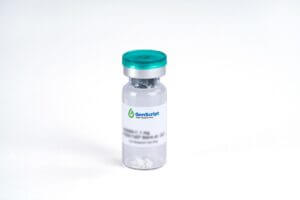
IL-1β, Mouse
$1,712.06 Add to cart View Product DetailsInterleukin-1 Beta (IL-1β) is a proinflammatory cytokine produced in a variety of cells including monocytes, tissue macrophages, keratinocytes and other epithelial cells. Both IL-1 alpha and IL-1 beta binds to the same receptor and has similar if not identical biological properties. These cytokines have a broad range of activities including, stimulation of thymocyte proliferation, by inducing IL-2 release, B-cell maturation and proliferation, mitogenic FGF-like activity and the ability to stimulate the release of prostaglandin and collagenase from synovial cells. However, whereas IL-1 beta is a secreted cytokine, IL-1 alpha is predominantly a cell-associated cytokine.
-

IL-1β, Mouse(CHO-expressed)
$1,651.69 Add to cart View Product DetailsInterleukin-1 (IL-1) is a family of cytokines that play a central role in the regulation of immune and inflammatory responses to infections or sterile insults. IL-1α and IL-1β are the first two members discovered in this family, which are the products of distinct genes recognizing the same cell surface receptors. IL-1α and IL-1β are structurally related polypeptides that show approximately 25% homology at the amino acid level. Both proteins are produced by a wide variety of cells in response to stimuli such as those produced by inflammatory agents, infections, or microbial endotoxins. The proteins are synthesized as 31 kDa precursors that are subsequently cleaved into proteins with molecular weights of approximately 17.5 kDa. The specific protease responsible for the processing of IL-1β is interleukin 1β-converting enzyme (ICE)/caspase-1. Mature human and mouse IL-1β share approximately 75% amino acid sequence identity where human IL-1β has been found to be active on murine cell lines.
-
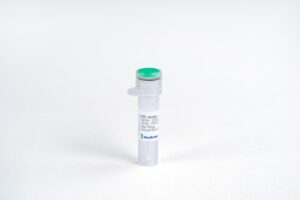
IL-1β, Rat
$2,018.25 Add to cart View Product DetailsInterleukin-1 Beta (IL-1 Beta) is a proinflammatory cytokine produced in a variety of cells including monocytes, tissue macrophages, keratinocytes and other epithelial cells. Both IL-1 alpha and IL-1 beta bind to the same receptor and have similar if not identical biological properties. These cytokines have a broad range of activities including, stimulation of thymocyte proliferation, by inducing IL-2 release, B-cell maturation and proliferation, mitogenic FGF-like activity and the ability to stimulate the release of prostaglandin and collagenase from synovial cells. However, whereas IL-1 beta is a secreted cytokine, IL-1 alpha is predominantly a cell-associated cytokine.
-
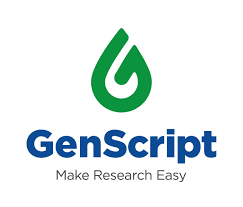
IL-1β, Rat
$3,540.56 Add to cart View Product DetailsInterleukin-1beta (IL-1β) is a non-secreted proinflammatory cytokine produced mainly by activated macrophages, as well as neutrophils, epithelial cells, and endothelial cells. It possesses metabolic, physiological, haematopoietic activities, and plays one of the central roles in the regulation of the immune responses. Both IL-1αand IL-1β binds to the same receptor and have similar but not identical biological properties. The mature rat IL1β shares 90 % a.a. sequence identity with cotton rat and mouse and 65 % to 77 % with canine, human,and rhesus IL1β.
-

IL-2 R α, His, Human
$1,224.75 Add to cart View Product DetailsInterleukin-2 receptor (IL-2R) is a heterotrimeric protein expressed on the surface of certain immune cells, such as lymphocytes, that binds and responds to the cytokine IL-2. The IL-2R is made up of 3 subunits – alpha (α), beta (β) and gamma (γ). The α and β chains are involved in binding IL-2, while signal transduction following cytokine interaction is carried out by the γ-chain, along with the β subunit. The β and γ chains of the IL-2R are members of the type I cytokine receptor family. IL-2R has a high binding affinity to IL-2 and is expressed by antigen-activated T lymphocytes (T cells). IL-2 Rα is also known as CD25, p55, and Tac (activated T cell) antigen.
-
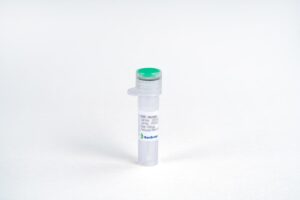
IL-2, Human
$978.94 Add to cart View Product DetailsInterleukin-2 (IL-2) is a Oglycosylated, four α-helix bundle cytokine that has potent stimulatory activity for antigen-activated T cells. It is expressed by CD4+ and CD8+ T cells, γδ T cells, B cells, dendritic cells, and eosinophils. IL-2/IL-2R signaling is required for T-cell proliferation and other fundamental functions which are essential for the immune response. IL-2 stimulates growth and differentiation of B-cells, NK cells, lymphokine activated killer cells, monocytes, macrophages and oligodendrocytes.
-
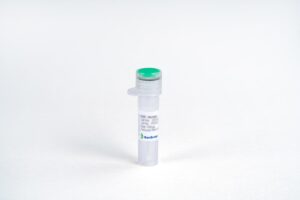
IL-2, Human
$599.44 Add to cart View Product DetailsInterleukin-2 (IL-2) is a Oglycosylated, four α-helix bundle cytokine that has potent stimulatory activity for antigen-activated T cells. It is expressed by CD4+ and CD8+ T cells, γδ T cells, B cells, dendritic cells, and eosinophils. IL-2/IL-2R signaling is required for T-cell proliferation and other fundamental functions which are essential for the immune response. IL-2 stimulates growth and differentiation of B-cells, NK cells, lymphokine activated killer cells, monocytes, macrophages and oligodendrocytes.
-

IL-2, Mouse
$1,871.63 Add to cart View Product DetailsMature mouse IL-2 shares 56% and 73% aa sequence identity with human and rat IL-2, respectively. It shows strain-specific heterogeneity in an N-terminal region that contains a poly-glutamine stretch. Mouse and human IL-2 exhibit cross-species activity. The receptor for IL-2 consists of three subunits that are present on the cell surface in varying preformed complexes. The 55 kDa IL-2 R alpha is specific for IL-2 and binds with low affinity. The 75 kDa IL-2 R beta, which is also a component of the IL-15 receptor, binds IL-2 with intermediate affinity. The 64 kDa common gamma chain gamma c/IL-2 R gamma, which is shared with the receptors for IL-4, -7, -9, -15, and -21, does not independently interact with IL-2. Upon ligand binding, signal transduction is performed by both IL-2 R beta and gamma c. It drives resting T cells to proliferate and induces IL-2 and IL-2 R alpha synthesis. It contributes to T cell homeostasis by promoting the Fas-induced death of naïve CD4+ T cells but not activated CD4+ memory lymphocytes. IL-2 plays a central role in the expansion and maintenance of regulatory T cells, although it inhibits the development of Th17 polarized cells.
-

IL-20, Human
$3,458.63 Add to cart View Product DetailsIL-20 is a member of the IL-10 family of regulatory cytokines which includes IL-10, IL-19, IL-20, IL-22, IL-24 and IL-26. Members of this family share partial homology in their amino acid sequences but they are dissimilar in their biological functions. IL-20 is a hematopoietic growth factor capable of stimulating colony formation by CD34+ multipotential progenitors, but not by other progenitor cells. IL-20 signals through a receptor system composed of type I IL-20R-α and type II IL-20R-β. Over-expression of IL-20 in keratinocytes expressing both receptor subunits has been implicated in the induction of inflammatory skin disease.
-

IL-21, Human
$2,018.25 Add to cart View Product DetailsInterleukin-21 (IL-21) belongs to the Type I four helix bundle cytokines, and shares the common cytokine receptor γ chain with IL-2, IL-4, IL-7, IL-9, and IL-15. IL-21 is expressed by CD4+ T cells, natural killer (NK) T cells, and Th17 cells, and the IL-21 receptor is highly expressed on CD4+ and CD8+ B cells; indeed, IL-21 plays a pivotal role in the survival and proliferation of B cells, and their differentiation to immunoglobulin (Ig) producing cells. IL-21 up-regulates and down-regulates the production of IgG1 and IgE by B cells, respectively, and diminishes the severity of allergy and asthma. In some case, IL-21 also induces the apoptosis of B cells. The other roles of IL-21 include regulation of innate immune systems, implication on autoimmunity, and antitumor actions.
-

IL-21, Mouse
$2,264.06 Add to cart View Product DetailsInterleukin-21 (IL-21) belongs to the Type I four helix bundle cytokines, and shares the common cytokine receptor γ chain with IL-2, IL-4, IL-7, IL-9, and IL-15. IL-21 is expressed by CD4+ T cells, natural killer (NK) T cells, and Th17 cells. The IL-21 receptor is highly expressed on CD4+ and CD8+ B cells. IL-21 plays a pivotal role in the survival and proliferation of B cells, and their differentiation to immunoglobulin (Ig) producing cells. IL-21regulates the production of IgG1 and IgE by B cells, and diminishes the severity of allergy and asthma. In some cases, IL-21 induces B cell apoptosis. Other roles of IL-21 include regulation of the innate immune system, implication in autoimmunity, and antitumor activity.
-

IL-22, Human
$2,264.06 Add to cart View Product DetailsInterleukin-22(IL-22) belongs to a group of cytokines called the IL-10 family or IL-10 superfamily (including IL-19, IL-20, IL-24, and IL-26) which are a class of potent mediators of cellular inflammatory responses. It shares use of IL-10R2 in cell signaling with other members of this family, such as IL-10, IL-26, IL-28A/B and IL-29. IL-22 is produced by activated DC and T cells and initiates innate immune responses against bacterial pathogens in epithelial cells such as those in the lung and gut. IL-22 along with IL-17 is produced by splenic LTi-like cells and Th17 cells and likely plays a role in the coordinated response of both adaptive and innate immune systems.IL-22 signals through a receptor system consisting of IL-10R-β/CRF2-4 and IL-22R, both of which are members of the class II cytokine-receptor family.
-

IL-22, Human(HEK 293-expressed)
$2,018.25 Add to cart View Product DetailsInterleukin-22(IL-22) belongs to a group of cytokines called the IL-10 family or IL-10 superfamily (including IL-19, IL-20, IL-24, and IL-26) which are a class of potent mediators of cellular inflammatory responses. It shares use of IL-10R2 in cell signaling with other members of this family, such as IL-10, IL-26, IL-28A/B and IL-29. IL-22 is produced by activated DC and T cells and initiates innate immune responses against bacterial pathogens in epithelial cells such as those in the lung and gut. IL-22 along with IL-17 is produced by splenic LTi-like cells and Th17 cells and likely plays a role in the coordinated response of both adaptive and innate immune systems.IL-22 signals through a receptor system consisting of IL-10R-β/CRF2-4 and IL-22R, both of which are members of the class II cytokine-receptor family.
-

IL-22, Mouse
$2,264.06 Add to cart View Product DetailsInterleukin-22 (IL-22) is a member of a group of cytokines called the IL-10 family which include IL-10,IL-19, IL-20, IL-24, and IL-26. IL-22 shares use of the IL-10R2 in cell signaling with other members of this family IL-22 signals through a receptor system consisting of IL-10R-β/CRF2-4 and IL-22R, both of which are members of the class II cytokine-receptor family. IL-22 is produced by activated DCs and T cells and initiates an innate immune response against bacterial pathogens especially in epithelial cells such as those in the respiratory tract and gut. IL-22 along with IL-17 is rapidly produced by splenic LTi-like cells and can also be produced by Th17 cells, which plays a likely role in the coordinated response of both adaptive and innate immune systems.
-

IL-22, Mouse
$2,501.25 Add to cart View Product DetailsInterleukin-22 (IL-22) is a member of a group of cytokines called the IL-10 family which include IL-10,IL-19, IL-20, IL-24, and IL-26. IL-22 shares use of the IL-10R2 in cell signaling with other members of this family IL-22 signals through a receptor system consisting of IL-10R-β/CRF2-4 and IL-22R, both of which are members of the class II cytokine-receptor family. IL-22 is produced by activated DCs and T cells and initiates an innate immune response against bacterial pathogens especially in epithelial cells such as those in the respiratory tract and gut. IL-22 along with IL-17 is rapidly produced by splenic LTi-like cells and can also be produced by Th17 cells, which plays a likely role in the coordinated response of both adaptive and innate immune systems.
-

IL-3, Human
$1,177.31 Add to cart View Product DetailsInterleukin-3 (IL-3) is a pleiotropic cytokine belonging to the interleukin family. IL-3 shares similarities with Granulocyte-Macrophage Colony-Stimulating Factor (GM-CSF) and IL-5: they all have a four-helix bundle structure, are located on the same chromosomes in both human and mouse, are produced by activated T cells, and share receptors. The IL-3/IL-5/GM-CSF receptor family members are all heterodimeric, composed of a receptor-specific α chain and a common β chain. IL-3 is also called multi-colony stimulating factor since it stimulates the development and colony formation of multiple lineages of hematopoietic cells by activating intracellular pathways such as Ras-Raf-ERK and JAK/STAT. IL-3 inhibits apoptosis and promotes cell survival by targeting the anti-apoptotic bcl-2 gene family.
-

IL-3, Human(CHO-expressed)
$1,177.31 Add to cart View Product DetailsInterleukin-3 (IL-3) is a pleiotropic cytokine belonging to the interleukin family. IL-3 shares similarities with Granulocyte-Macrophage Colony-Stimulating Factor (GM-CSF) and IL-5: they all have a four-helix bundle structure, are located on the same chromosomes in both human and mouse, are produced by activated T cells, and share receptors. The IL-3/IL-5/GM-CSF receptor family members are all heterodimeric, composed of a receptor-specific α chain and a common β chain. IL-3 is also called multi-colony stimulating factor since it stimulates the development and colony formation of multiple lineages of hematopoietic cells by activating intracellular pathways such as Ras-Raf-ERK and JAK/STAT. IL-3 inhibits apoptosis and promotes cell survival by targeting the anti-apoptotic bcl-2 gene family.
-

IL-3, Mouse
$2,018.25 Add to cart View Product DetailsInterleukin-3 (IL-3) is a pleiotropic cytokine belonging to the interleukin family. IL-3 shares similarities with Granulocyte-Macrophage Colony-Stimulating Factor (GM-CSF) and IL-5: they all have a four-helix bundle structure, are located on the same chromosomes in both human and mouse, are produced by activated T cells, and share receptors. The IL-3/IL-5/GM-CSF receptor family members are all heterodimeric, composed of a receptor-specific α chain and a common β chain. IL-3 is also called multi-colony stimulating factor since it stimulates the development and colony formation of multiple lineages of hematopoietic cells by activating intracellular pathways such as Ras-Raf-ERK and JAK/STAT. IL-3 inhibits apoptosis and promotes cell survival by targeting the anti-apoptotic bcl-2 gene family.
-

IL-31, Human
$3,458.63 Add to cart View Product DetailsHuman IL-31 is a T-cell derived cytokine that shares several structural and functional characteristics with IL-6, Oncostatin M, LIF, and Cardiotrophin-1. It signals through a receptor complex comprised of GPL (GP130-like, IL-31RA) and OSMR (Oncostatin M receptor). GPL/OSMR signaling is a strong activator of STAT3 and STAT5, and can also activate STAT1, Jak1, and Jak2 signaling pathways. IL-31 regulated immune responses have been implicated in skin physiology and inflammatory skin diseases.
-

IL-33, Human
$2,018.25 Add to cart View Product DetailsInterleukin-33 (IL-33) is a proinflammatory cytokine that belongs to the IL-1 family. IL-33 is expressed in a variety of cells, including epithelial and endothelial cells, smooth muscle cells, macrophages and fibroblasts. The primary receptors for IL-33 are ST2 and IL-1 receptor accessory protein (IL-1RAcP), both of which belong to the IL-1 receptor family. IL-33 is localized to the nucleus of resting cells where it binds to chromatin in the H2A-H2B histone complex as a transcriptional suppressor. IL-33 is secreted by cells during injury which induces a T-helper 2 type inflammatory response. Evidence suggests IL-33 plays a role in autoimmune disease. IL-33’s interaction with ST2 can drive allergic pathology and IL-33 has been reported to play a role in the development of rheumatoid arthritis and systemic lupus erythematosus.
-

IL-33, Mouse
$3,458.63 Add to cart View Product DetailsInterleukin-33 (IL-33) is a proinflammatory cytokine that belongs to the IL-1 family. IL-33 is expressed in a variety of cells, including epithelial and endothelial cells, smooth muscle cells, macrophages and fibroblasts. The primary receptors for IL-33 are ST2 and IL-1 receptor accessory protein (IL-1RAcP), both of which belong to the IL-1 receptor family. IL-33 is localized to the nucleus of resting cells where it binds to chromatin in the H2A-H2B histone complex as a transcriptional suppressor. IL-33 is secreted by cells during injury which induces a T-helper 2 type inflammatory response. Evidence suggests IL-33 plays a role in autoimmune disease. IL-33’s interaction with ST2 can drive allergic pathology and IL-33 has been reported to play a role in the development of rheumatoid arthritis and systemic lupus erythematosus.
-

IL-4 R, Human
$3,648.38 Add to cart View Product DetailsInterleukin-4 Receptor, also known as IL-4RA and CD124, is a transmembrane glycoprotein belonging to the class I receptor family. It is highly expressed by activated T-cells. IL-4RA couples with γ chain to form the type I receptor for IL-4. The extracellular domain of IL-4RA binds to IL-4 and antagonizes its activity. IL-4RA plays an important role in Th2 cell differentiation, Ig class switching and alternative macrophage activation. It has also been implicated in allergic inflammation, tumor progression and atherogenesis.
-

IL-4, Human
$1,177.31 Add to cart View Product DetailsInterleukin-4 (IL-4) is a pleiotropic cytokine regulates diverse T and B cell responses including cell proliferation, survival, and gene expression. It has important effects on the growth and differentiation of different immunologically competent cells. Interleukin-4 is produced by mast cells, T cells, and bone marrow stromal cells. IL-4 regulates the differentiation of native CD4+ T cells (Th0 cells) into helper Th2 cells, and regulates the immunoglobulin class switching to the IgG1 and IgE isotypes. IL-4 has numerous important biological functions including stimulating B-cells activation, T-cell proliferation and CD4+ T-cells differentiation to Th2 cells. It is a key regulator in hormone control and adaptive immunity. IL-4 also plays a major role in inflammation response and wound repair via activation of macrophage into M2 cells. IL-4 is stabilized by three disulphide bonds forming a compact globular protein structure. Four alpha-helix bundle with left-handed twist is dominated half of the protein structure with 2 overhand connections and fall into a 2-stranded anti-parallel beta sheet.
-

IL-4, Mouse
$1,177.31 Add to cart View Product DetailsInterleukin-4 (IL-4) is a pleiotropic cytokine regulates diverse T and B cell responses including cell proliferation, survival, and gene expression. It has important effects on the growth and differentiation of different immunologically competent cells. Interleukin-4 is produced by mast cells, T cells, and bone marrow stromal cells. IL-4 regulates the differentiation of native CD4+ T cells (Th0 cells) into helper Th2 cells, and regulates the immunoglobulin class switching to the IgG1 and IgE isotypes. IL-4 has numerous important biological functions including stimulating B-cells activation, T-cell proliferation and CD4+ T-cells differentiation to Th2 cells. It is a key regulator in hormone control and adaptive immunity. IL-4 also plays a major role in inflammation response and wound repair via activation of macrophage into M2 cells. IL-4 is stabilized by three disulphide bonds forming a compact globular protein structure. Four alpha-helix bundle with left-handed twist is dominated half of the protein structure with 2 overhand connections and fall into a 2-stranded anti-parallel beta sheet.
-
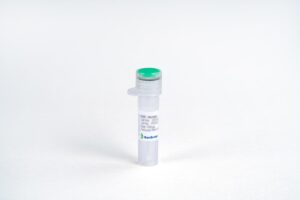
IL-4, Porcine
$2,402.06 Add to cart View Product DetailsInterleukin-4 (IL-4) is a pleiotropic cytokine regulates diverse T and B cell responses including cell proliferation, survival, and gene expression. It has important effects on the growth and differentiation of different immunologically competent cells. Interleukin-4 is produced by mast cells, T cells, and bone marrow stromal cells. IL-4 regulates the differentiation of native CD4+ T cells (Th0 cells) into helper Th2 cells, and regulates the immunoglobulin class switching to the IgG1 and IgE isotypes. IL-4 has numerous important biological functions including stimulating B-cells activation, T-cell proliferation and CD4+ T-cells differentiation to Th2 cells. It is a key regulator in hormone control and adaptive immunity. IL-4 also plays a major role in inflammation response and wound repair via activation of macrophage into M2 cells. IL-4 is stabilized by three disulphide bonds forming a compact globular protein structure. Four alpha-helix bundle with left-handed twist is dominated half of the protein structure with 2 overhand connections and fall into a 2-stranded anti-parallel beta sheet.
-

IL-5, Human
$1,470.56 Add to cart View Product DetailsInterleukin-5 (IL-5), produced by mast cells, T cells and eosinophils, is responsible for the activities attributed to eosinophil differentiating factor, B cell growth factor II and T cell-replacing factor (TRF). It can increase production and mobilization of eosinophils and CD34+ progenitors from the bone marrow. IL-5 plays an important role in inducing cell-mediated immunity against parasitic infections and certain tumors. IL-5 also promotes differentiation of basophils and primes them for histamine and leukotriene release.
-

IL-5, Human(CHO-expressed)
$1,470.56 Add to cart View Product DetailsInterleukin-5 (IL-5), produced by mast cells, T cells and eosinophils, is responsible for the activities attributed to eosinophil differentiating factor, B cell growth factor II and T cell-replacing factor (TRF). It can increase production and mobilization of eosinophils and CD34+ progenitors from the bone marrow. IL-5 plays an important role in inducing cell-mediated immunity against parasitic infections and certain tumors. IL-5 also promotes differentiation of basophils and primes them for histamine and leukotriene release.
-

IL-5, Mouse(CHO-expressed)
$1,470.56 Add to cart View Product DetailsInterleukin-5 (IL-5), produced by mast cells, T cells and eosinophils, is responsible for the activities attributed to eosinophil differentiating factor, B cell growth factor II and T cell-replacing factor (TRF). It can increase production and mobilization of eosinophils and CD34+ progenitors from the bone marrow. IL-5 plays an important role in inducing cell-mediated immunity against parasitic infections and certain tumors. IL-5 also promotes differentiation of basophils and primes them for histamine and leukotriene release.
-

IL-5, Rat
$2,018.25 Add to cart View Product DetailsInterleukin-5 (IL-5), produced by mast cells, T cells and eosinophils, is responsible for the activities attributed to eosinophil differentiating factor, B cell growth factor II and T cell-replacing factor (TRF). It can increase production and mobilization of eosinophils and CD34+ progenitors from the bone marrow. IL-5 plays an important role in inducing cell-mediated immunity against parasitic infections and certain tumors. IL-5 also promotes differentiation of basophils and primes them for histamine and leukotriene release.
-

IL-5, Rat
$2,018.25 Add to cart View Product DetailsInterleukin-5 (IL-5), produced by mast cells, T cells and eosinophils, mediates the activities of eosinophil differentiating factor, B cell growth factor II and T cell-replacing factor (TRF). It can increase production and mobilization of eosinophils and CD34+ progenitors from the bone marrow. IL-5 plays an important role in inducing cell-mediated immunity against parasitic infections and certain tumors. IL-5 also promotes differentiation of basophils and primes them for histamine and leukotriene release.
-

IL-5RA, His, Human
$2,238.19 Add to cart View Product DetailsInterleukin-5 Receptor alpha (IL-5Rα, CD125) is a 60 kDa hematopoietin receptor that plays a dominant role in eosinophil biology. Mature human IL-5 Rα consists of a 322 aa extracellular domain (ECD) with a WSxWS motif and a four cysteine motif, a 20 aa transmembrane segment, and a 58 aa cytoplasmic domain. Within the ECD, human IL-5Rα shares 71% aa sequence identity with mouse and rat IL-5 Rα. Alternate splicing of human IL-5 Rα generates soluble secreted forms which function as IL-5 antagonists. The high affinity receptor for IL-5 is a complex that consists of the ligand binding IL-5 Rα and the transmembrane common β chain (βc/CD131) which is shared with the receptor complexes for IL-3 and GMCSF. IL-5 Rα binds IL-5 at low affinity and then associates with preformed βc oligomers to form the signaling competent receptor complex. IL-5 stimulation of CD34+ hematopoietic progenitor cells induces the up-regulation of transmembrane IL-5Rα followed by eosinophilic differentiation and activation.
-
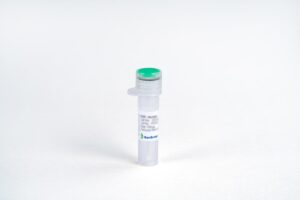
IL-6, Human
$1,177.31 Add to cart View Product DetailsInterleukin-6 (IL-6), also known as BSF-2, CDF and IFNB2, is a pleiotropic cytokine that participates in both pro-inflammatory and anti-inflammatory responses. It is produced mainly by T cells, macrophages, monocytes, endothelial cells and muscle cells. IL-6 binds to IL-6 receptor (IL-6R) to trigger the association of IL-6R with gp130, inducing signal transduction through JAKs and STATs. The biological functions of IL-6 are diverse. It stimulates B cell differentiation and antibody production, myeloma and plasmacytoma growth, and nerve cell differentiation. It also acts as a myokine, produced by muscle cells in response to muscle contraction and released into the blood stream to help break down fats and improve insulin resistance.
-

IL-6, Human(CHO-expressed)
$1,138.50 Add to cart View Product DetailsInterleukin-6 (IL-6), also known as BSF-2, CDF and IFNB2, is a pleiotropic cytokine that acts in both pro-inflammatory and anti-inflammatory responses. It is produced mainly by T cells, macrophages, monocytes, endothelial cells and muscle cells. IL-6 binds to IL-6 receptor (IL-6R) to trigger the association of IL-6R with gp130, inducing signal transduction through JAKs and STATs. The biological functions of IL-6 are diverse. It stimulates B cell differentiation and antibody production, myeloma and plasmacytoma growth, as well as nerve cell differentiation. It also acts as a myokine, produced by muscle cells in response to muscle contraction, to be released to the blood stream to help break down fats and improve insulin resistance.
-

IL-6, Mouse
$2,906.63 Add to cart View Product DetailsInterleukin-6 (IL-6), also known as BSF-2, CDF and IFNB2, is a pleiotropic cytokine that participates in both pro-inflammatory and anti-inflammatory responses. It is produced mainly by T cells, macrophages, monocytes, endothelial cells and muscle cells. IL-6 binds to IL-6 receptor (IL-6R) to trigger the association of IL-6R with gp130, inducing signal transduction through JAKs and STATs. The biological functions of IL-6 are diverse. It stimulates B cell differentiation and antibody production, myeloma and plasmacytoma growth, and nerve cell differentiation. It also acts as a myokine, produced by muscle cells in response to muscle contraction and released into the blood stream to help break down fats and improve insulin resistance.
-

IL-6, Rat (HEK 293-expressed)
$2,018.25 Add to cart View Product DetailsInterleukin-6 (IL-6), also known as BSF-2, CDF and IFNB2, is a pleiotropic cytokine that participates in both pro-inflammatory and anti-inflammatory responses. It is produced mainly by T cells, macrophages, monocytes, endothelial cells and muscle cells. IL-6 binds to IL-6 receptor (IL-6R) to trigger the association of IL-6R with gp130, inducing signal transduction through JAKs and STATs. The biological functions of IL-6 are diverse. It stimulates B cell differentiation and antibody production, myeloma and plasmacytoma growth, and nerve cell differentiation. It also acts as a myokine, produced by muscle cells in response to muscle contraction and released into the blood stream to help break down fats and improve insulin resistance.
-

IL-7, His, Human(CHO-expressed)
$2,018.25 Add to cart View Product DetailsInterleukin-7 (IL-7), also known as lymphopoietin 1 and pre-B cell factor, is a hematopoietic growth factor belonging to the IL-7/IL-9 family. It is produced by keratinocytes, dendritic cells, hepatocytes, neurons and epithelial cells. IL-7 binds and signals through IL-7 receptor, a heterodimer consisting of IL-7 receptor alpha and common gamma chain receptor. IL-7 plays a role in regulating early B cell and T cell development. It is also important for optimal dendritic cell-T cell interaction.
-

IL-7, Human
$3,458.63 Add to cart View Product DetailsInterleukin-7 (IL-7), also known as lymphopoietin 1 and pre-B cell factor, is a hematopoietic growth factor belonging to the IL-7/IL-9 family. It is produced by keratinocytes, dendritic cells, hepatocytes, neurons and epithelial cells. IL-7 binds and signals through IL-7 receptor, a heterodimer consisting of IL-7 receptor alpha and common gamma chain receptor. IL-7 plays a role in regulating early B cell and T cell development. It is also important for optimal dendritic cell-T cell interaction.
-
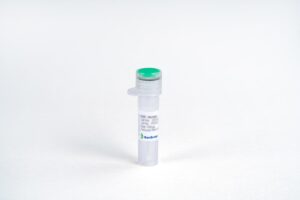
IL-8 (77aa)/CXCL8, Human
$1,323.94 Add to cart View Product DetailsInterleukin-8 (IL-8), also known as CXCL8, GCP-1 and NAP-1, is one of the first discovered chemokines and belongs to the CXCL family, in which the first two conserved cysteines are separated by one residue. In vivo, IL-8 exists in two forms: a 77 a.a. protein produced by endothelial cells, and the more active 72 a.a. protein produced by monocytes. The receptors for IL-8 are the seven-helical G-protein coupled receptors CXCR1 and CXCR2, exclusively expressed on neutrophils. The functions of IL-8 are to induce rapid changes in cell morphology, activate integrins, and release the granule contents of neutrophils. Thus, IL-8 can enhance the antimicrobial actions of defense cells. It is secreted by monocytes, macrophages and endothelial cells. IL-8 signals through CXCR1 and CXCR2 to chemoattract neutrophils, basophils, and T cells. IL-8 is also a potent promoter of angiogenesis. Other functions of this protein, such as involvement in bronchiolitis pathogenesis, have also been reported.
-

IL-8/CXCL8 (77aa), Human(CHO-expressed)
$1,177.31 Add to cart View Product DetailsInterleukin-8 (IL-8), also known as CXCL8, GCP-1 and NAP-1, is one of the first discovered chemokines and belongs to the CXCL family, in which the first two conserved cysteines are separated by one residue. In vivo, IL-8 exists in two forms: a 77 a.a. protein produced by endothelial cells, and the more active 72 a.a. protein produced by monocytes. The receptors for IL-8 are the seven-helical G-protein coupled receptors CXCR1 and CXCR2, exclusively expressed on neutrophils. The functions of IL-8 are to induce rapid changes in cell morphology, activate integrins, and release the granule contents of neutrophils. Thus, IL-8 can enhance the antimicrobial actions of defense cells. It is secreted by monocytes, macrophages and endothelial cells. IL-8 signals through CXCR1 and CXCR2 to chemoattract neutrophils, basophils, and T cells. IL-8 is also a potent promoter of angiogenesis. Other functions of this protein, such as involvement in bronchiolitis pathogenesis, have also been reported.
-
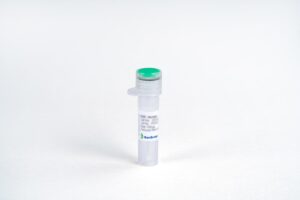
IL-9, Human
$2,018.25 Add to cart View Product DetailsInterleukin 9, also known as IL9, is a cytokine (cell signalling molecule) belonging to the group of interleukins. The protein encoded by this gene is a cytokine produced by T-cells and specifically by CD4+ helper cells that acts as a regulator of a variety of hematopoietic cells. This cytokine stimulates cell proliferation and prevents apoptosis. It functions through the interleukin-9 receptor (IL9R), which activates different signal transducer and activator (STAT) proteins and thus connects this cytokine to various biological processes. The gene encoding this cytokine has been identified as a candidate gene for asthma. Genetic studies on a mouse model of asthma demonstrated that this cytokine is a determining factor in the pathogenesis of bronchial hyperresponsiveness.
-

IL-9, Mouse
$2,018.25 Add to cart View Product DetailsInterleukin 9, also known as IL9, is a cytokine (cell signalling molecule) belonging to the group of interleukins. The protein encoded by this gene is a cytokine produced by T-cells and specifically by CD4+ helper cells that acts as a regulator of a variety of hematopoietic cells. This cytokine stimulates cell proliferation and prevents apoptosis. It functions through the interleukin-9 receptor (IL9R), which activates different signal transducer and activator (STAT) proteins and thus connects this cytokine to various biological processes. The gene encoding this cytokine has been identified as a candidate gene for asthma. Genetic studies on a mouse model of asthma demonstrated that this cytokine is a determining factor in the pathogenesis of bronchial hyperresponsiveness.
-
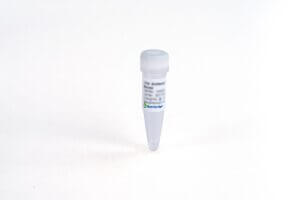
IL6 (55C6), mAb, Mouse
$172.50 Add to cart View Product DetailsInterleukin-6 (IL6) is a multi-functional cytokine, produced by variety of cells including T-cells, B-cells, monocytes, fibroblasts, keratinocytes, endothelial cells, mesangial cells, astrocytes and bone marrow stroma cells. It is involved in the induction of B-cell differentiation, growth promotion of myeloma cells and proliferation and differentiation of T cells. IL6 can regulate immune responses, acute phase reactions and hematopoiesis.
-

IL6 (55E9), mAb, Mouse
$172.50 Add to cart View Product DetailsInterleukin-6 (IL6) is a multi-functional cytokine, produced by variety of cells including T-cells, B-cells, monocytes, fibroblasts, keratinocytes, endothelial cells, mesangial cells, astrocytes and bone marrow stroma cells. It is involved in the induction of B-cell differentiation, growth promotion of myeloma cells and proliferation and differentiation of T cells. IL6 can regulate immune responses, acute phase reactions and hematopoiesis.
-
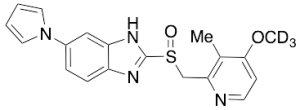
Ilaprazole-d3
$208.73 Add to cart View Product DetailsMolecular Formula : C19 D3 H15 N4 O2 S
-
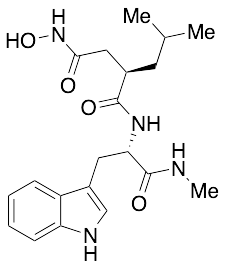
Ilomastat
$56.06 Add to cart View Product DetailsMolecular Formula : C20H28N4O4
-
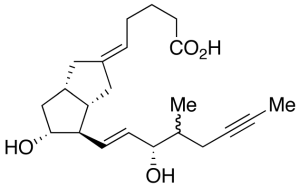
Iloprost
$106.95 Add to cart View Product DetailsMolecular Formula : C22 H32 O4
-

Imagabalin Hydrochloride
$220.80 Add to cart View Product DetailsMolecular Formula : C9 H19 N O2 . H Cl
-

Imatinib (Piperidine)-N,N-dioxide
$187.16 Add to cart View Product DetailsMolecular Formula : C29 H31 N7 O3
-

Imatinib 4-Benzoic Acid
$204.41 Add to cart View Product DetailsMolecular Formula : C36 H35 N7 O3
-

Imatinib-d8
$366.56 Add to cart View Product DetailsMolecular Formula : C29 2H8 H23 N7 O






